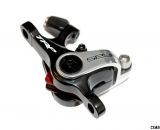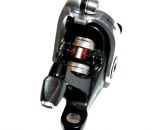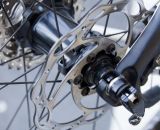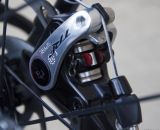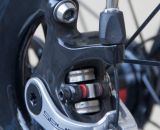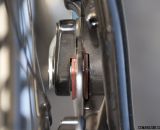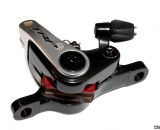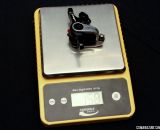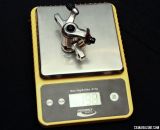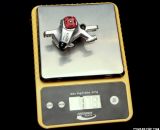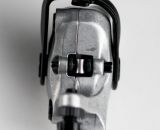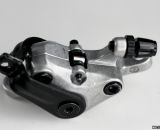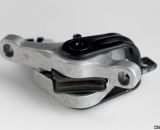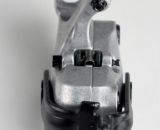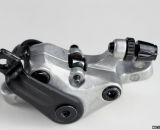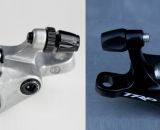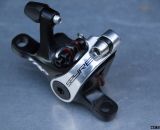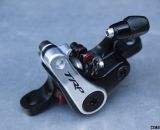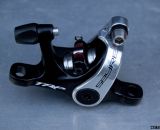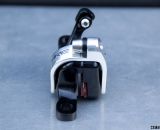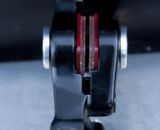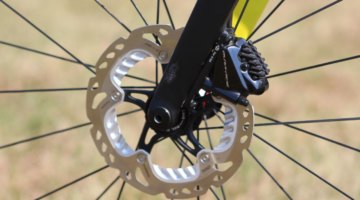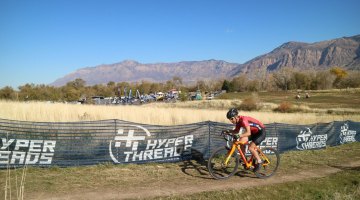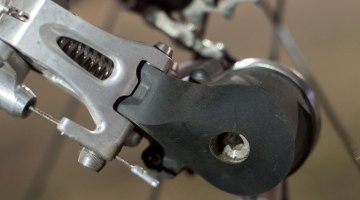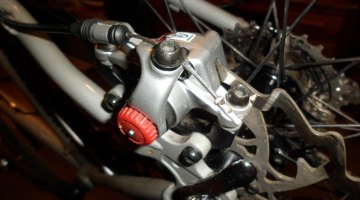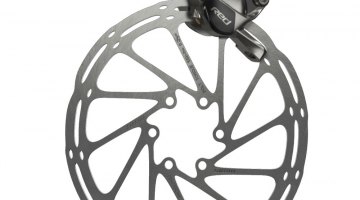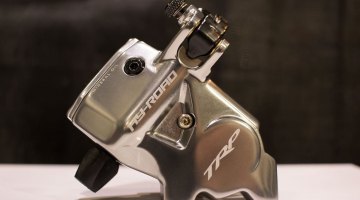Slow It Down, Please
Had enough analyzing the nuances of this new brake’s design? Well, we’ll cut to the chase. We took a Spyre-equipped Volagi to the hills above Los Gatos and Saratoga in the Bay Area, and put the brakes to the test on some steep descents with some mossy off-cambers and a few cyclocross pros to chase. My bike was set up with a 160mm front rotor and 140mm rear rotor. At speeds that sent another Spyre-equipped journalist off the pavement (possibly due to an oily rotor), I enjoyed relatively strong braking power and good modulation, especially in the front (due to the larger rotor).
Of course, impressions are all relative to each rider’s baseline, and having gotten used to the braking power of mechanical disc brakes on a slew of recent test bikes (see the 10+ disc-equipped bikes in Issue 19 and 20), I wasn’t wowed but certainly satisfied.
The brake spring is strong and snappy, certainly stronger than a cantilever set-up for a light action feel, and it’s a reminder that you’re not on hydraulic brakes. The sintered pads were surprising quiet on our dry ride, and offered sufficient grab.
It’s also important to note that our Spyre tests were done on the road with 23mm road tires. This is an important note because road tires offer a lot more grip than the average cyclocross tire on dirt or grass, and when combined with the higher speeds typical of a road descent, it’s harder to lock up a tire and thus it’s easy to think braking power is less because it takes so much more effort to skid when compared to my normal off-road rides. It wasn’t until I hopped on an Avid BB7-equipped bike a day later and did a mixed terrain ride that I had a fair comparison. On pavement, the BB7 brakes felt comparable, but off-road they seemed so much more powerful than the Spyre, only because it was so much easier to skid.
You should also keep in mind that every journalist rode the Spyre and HY-RD brakes back-to-back, and it’s very easy to come away unimpressed with the Spyre when comparing it to the cable-actuated hydraulic HY-RD, which is a lot more powerful. Any reviews from Tuesday should take that into consideration. It’s only after getting back on an Avid BB7-equipped bike that I feel comfortable in saying the Spyre is just as powerful as the Avid BB7 when pulled by Shimano, if not a bit more so. They’re close. Far more noticeable, at least to this tester, is the difference that the rotor size makes on braking power, and a 160mm rear rotor certainly makes a brake more powerful than a 140mm rotor.
One road ride isn’t nearly enough to report on how the brakes will handle and hold up in cyclocross conditions, but you can be sure we’ll give them a thorough test, just as we’ve done with every other cyclocross-relevant disc brake. Stay tuned for a full test.
TRP Brakes Spyre Mechanical Disc Brake Photo Gallery:
TRP Brakes Spyre Mechanical Disc Brake Specs:
MSRP: $80 per wheel, $110 per wheel SLC model with carbon lever arm
Weight: 158g per wheel, 149g per wheel SLC model
Rotors: Available with 140 and 160mm rotors (the company recommends 160mm for road). Rotors are the same as the Tektro Lyra rotors.
Ride Weight Limit: None
Included: Caliper, rotor and semi-metallic pads. Does not come with cables or housing but they strongly recommend compression-less brake cable housing and the company will be coming out with their own cables and housing soon.
Available: early May 2013
More info: trpbrakes.com













